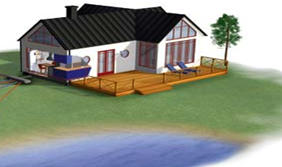Pollution and environment: refrigeration and air conditioning
Keywords:
Energy saving, Energy efficiency, Sustainable technologies, Heat exchangers, Refrigerant, Future prospectiveAbstract
Over the years, all parts of a commercial refrigerator, such as the compressor, heat exchangers, refrigerant, and packaging, have been improved considerably due to the extensive research and development efforts carried out by academia and industry. However, the achieved and anticipated improvement in conventional refrigeration technology are incremental since this technology is already nearing its fundamentals limit of energy efficiency is described is ‘magnetic refrigeration’ which is an evolving cooling technology. The word ‘green’ designates more than a colour. It is a way of life, one that is becoming more and more common throughout the world. An interesting topic on ‘sustainable technologies for a greener world’ details about what each technology is and how it achieves green goals. Recently, conventional chillers using absorption technology consume energy for hot water generator but absorption chillers carry no energy saving. With the aim of providing a single point solution for this dual purpose application, a product is launched but can provide simultaneous chilling and heating using its vapour absorption technology with 40% saving in heating energy. Using energy efficiency and managing customer energy use has become an integral and valuable exercise. The reason for this is green technology helps to sustain life on earth. This not only applies to humans but to plants, animals and the rest of the ecosystem. Energy prices and consumption will always be on an upward trajectory. In fact, energy costs have steadily risen over last decade and are expected to carry on doing so as consumption grows. This study discusses the potential for such integrated systems in the stationary and portable power market in response to the critical need for a cleaner energy technology for communities. Throughout the theme several issues relating to renewable energies, environment and sustainable development are examined from both current and future perspectives.
References
Anandarajah, A., 2003. Mechanism controlling permeability changes in clays due to changes in pore fluids. J. Geotech. Geo-environ. Eng., 129(2), 163-172.
Brain, G., Mark, S., 2007. Garbage in, energy out: landfill gas opportunities for the CHP projects. Cogeneration and On-Site Power, 8(5), 37-45.
Heinonen, E.W., Tapscott, R.E., Wildin, M.W., Beall, A.N., 1996. Assessment of antifreeze solutions for ground-source heat pumps systems. New Mexico Engineering Research Institute NMERI, 96/15/32580, 156.
Jo, H.Y., Katsumi, T., Benson, C.H., Edil, T.B., 2001. Hydraulic conductivity and swelling of non-prehydrated GCLs permeated with single- species salt solutions. J. Geotech. Geo-environ. Eng., 127(7), 557-567.
Luo, L., Fan, Y., Tondeur, D., 2007. Heat exchanger: from micro to multi- scale design optimisation. Int. J. Energ. Res., 31, 1266-1274.
Luo, L., Tondeur, D., Le Gall, H., Corbel, S., 2007. Constructal approach and multi-scale components. Appl. Therm. Eng., 27, 1708-1714.
Malin, N., Alex, W., 2000. Ground-source heat pumps: are they green? Environ. Build. New., July, Building Green, Inc. 9(7/8).
Omer, A.M., 2008. Chapter 10: Development of integrated bioenergy for improvement of quality of life of poor people in developing countries, In: Energy in Europe: Economics, Policy and Strategy- IB, Editors: Flip L. Magnusson and Oscar W. Bengtsson, 2008 NOVA Science Publishers, Inc., New York, USA., 341-373.
Omer, A.M., 2009a. Environmental and socio-economic aspect of possible development in renewable energy use, In: Proceedings of the 4th International Symposium on Environment, Athens, Greece, 21-24 May.
Omer, A.M., 2009b. Energy use, environment and sustainable development, In: Proceedings of the 3rd International Conference on Sustainable Energy and Environmental Protection (SEEP 2009), Dublin, Republic of Ireland, 12-15 August, 1011.
Omer, A.M., 2009c. Energy use and environmental impacts: a general review. J. Renew. Sustain. Energ., United State of America, September, 1(053101), 1- 29.
Omer, A.M., 2009d. Chapter 3: Energy use, environment and sustainable development, In: Environmental Cost Management, Editors: Randi Taylor Mancuso, 2009 NOVA Science Publishers, Inc., New York, USA., 129-166.
Philappacopoulus, A.J., Berndt, M.L., 2001. Influence of de-bonding in ground heat exchangers used with geothermal heat pumps. Geothermics, 30(5), 527-545.
Sims, R.H., 2007. Not too late: IPCC identifies renewable energy as a key measure to limit climate change. Renew. Energ. World., 10(4), 31-39.
Steele, J., 1997. Sustainable architecture: principles, paradigms, and case studies. New York: McGraw-Hill Inc.
Trevor, T., 2007. Fridge recycling: bringing agents in from the cold. Wast. Manag. World., 5, 43-47.

Published
How to Cite
Issue
Section
Copyright (c) 2020 Abdeen Mustafa Omer

This work is licensed under a Creative Commons Attribution-NonCommercial-NoDerivatives 4.0 International License.



